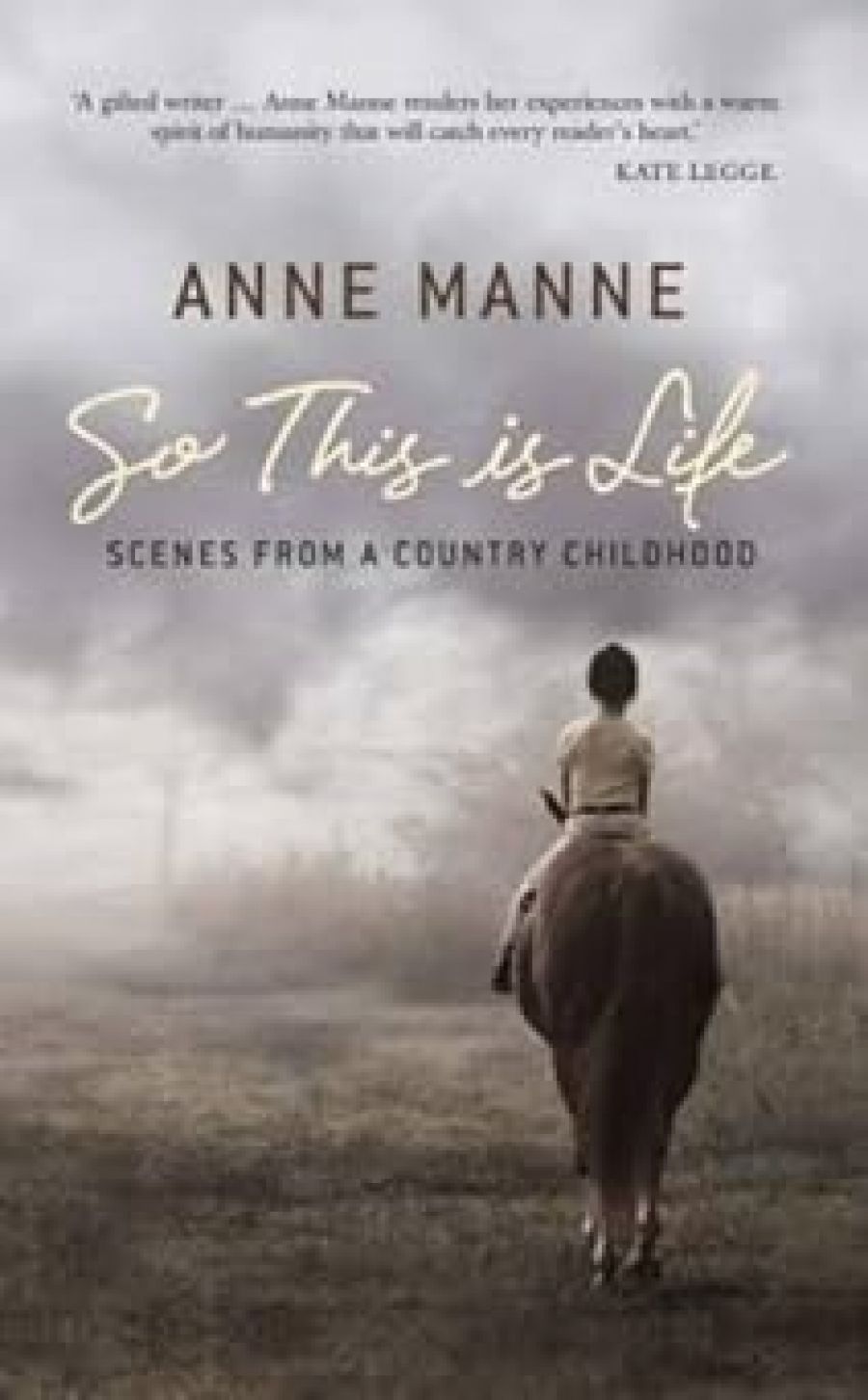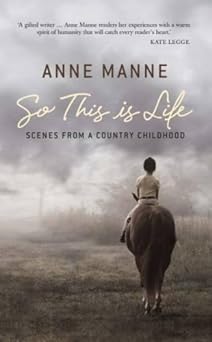
- Free Article: No
- Contents Category: Memoir
- Review Article: Yes
- Article Title: The never said
- Online Only: No
- Custom Highlight Text:
Anne Manne’s publisher invites us to include So This Is Life in the classical canon of autobiographies of Australian childhood – Hal Porter’s The Watcher on the Cast-Iron Balcony and Raimond Gaita’s Romulus, My Father. In Australian letters there has been a long tradition of autobiographical writing of childhood; this produced some of the earliest critical writing on autobiography – by Richard Coe and Joy Hooton, for example. But I remain unconvinced by the MUP blurb, for Manne’s essays do not take us back to Porter or Gaita at all. Rather, they suggest the rich and dreamy vignettes of David Malouf’s autobiographical 12 Edmondstone Street or the precisely observed rural domesticity that is captured in Olga Masters’s Cobargo stories. Daisy, Lily and Ivy, Manne’s great-aunts, all unmarried, who live together in the formerly grand but now decaying two-storey house where ‘absolutely nothing happened’, recall Masters’s ‘home girls’; Manne’s affective memory of her grandmother’s linen cupboard recalls the childhood perception and memory work that Malouf captures so powerfully.
- Book 1 Title: So This Is Life
- Book 1 Subtitle: Scenes From A Country Childhood
- Book 1 Biblio: Melbourne University Press, $34.99 hb, 160 pp
- Book 1 Cover Small (400 x 600):

These associations with Masters and Malouf, rather than the extended autobiographical monographs of Porter and Gaita, seem right, because Manne, too, is a writer of short prose forms. Her articles and essays on feminism, motherhood, child care and family policy are well known in journals and the popular press. So This Is Life collects a series of short autobiographical sketches that address childhood memory and place. Each is brief and self-contained, yet related in the aftermath of the traumatic memory that begins the collection: ‘On a winter’s night our family stood almost mute, barely speaking, on a dark railway platform.’ Anne is seven years old when her parents separate; her brother remains with his father in Adelaide, and the three girls travel with their mother across ‘The Border’ and back in time to rural Bendigo, where grand-parents and great-aunts remain as if ‘frozen in aspic since the Victorian era’.
The cosmopolitan autobiographical narrator translates her memories into a contemporary Australian idiom that draws on Luis Buñuel, Don Watson, Robert Altman and Ruth Park. The inspiration for this memory work triggered by the sensory world is not, as we might expect, Marcel Proust but Virginia Woolf. It is Woolf’s Moments of Being that suggests that in every day and in every life there is a jumble of inchoate emotions and sensations that one does not remember. Woolf’s writing is precipitated by exceptional moments of shock or recognition, when an event and the emotions aroused by it jolt her into hyper-alertness; experiences are not stitched into a seamless narrative but remain intensely felt and individuated flashes of insight
And so, Manne suggests, So This Is Life is not conventional memoir. These are sketches: vignettes inspired by Woolf where intensely felt episodes in childhood flash out from the quiet flow of ordinary moments, and where memory is oriented to the symbolic and metaphoric, to the emblematic moment. They include moments of transcendence, where the child on horseback experiences a brief shared ‘creatureliness’, a profound co-presence with another species, or an epiphanic moment of openness to the natural world.
These experiences of self-transcendence occur in the long process of healing after the traumatic split that divides and separates the family. As the sketches unfold and the child becomes school dux and a gifted young woman, the legacy of her own trauma is an attention to the loss and suffering of others: the ‘never saids’ of the generation of women who were left stranded in the aftermath of Gallipoli; the ‘ordinary tragedy’ and grief of the man who loses his boy; the ‘queer vitality’ of Old Ma Doak; and the crushing solitude of Bill, the widower farmer who becomes Manne’s quintessential figure of loneliness.
What are the associations between these experiences of childhood and the public intellectual who has contributed, often controversially, to debates about motherhood and parenting? Manne’s mother recedes as these scenes of childhood and experiences of self-transcendence progress, yet it is only with her mother’s slow recovery in the aftermath of divorce that the young girl is set free to open out with a new-found responsiveness to the natural world. Before this, mother and daughters retreat like ‘refugees ... cast back in time in order to be healed’.
Uppermost in these memories of childhood is the subjective experience of the family as a ‘peculiar thing’: ‘It consists of individuals but also has a kind of shared reality that has an existence quite outside, and larger than that of its individual members.’ Manne reaches out to Donald Winnicott, Helen Garner and Miles Franklin to grasp this first and most profound experience of subjectivity and loss, and to register its imprint in affective memory. So this is life! For Manne this expression is ‘drenched’ with an overwhelming sadness for the shattered family. What follows – scenes, vignettes and moments of being – are the fragments that remain.


Comments powered by CComment